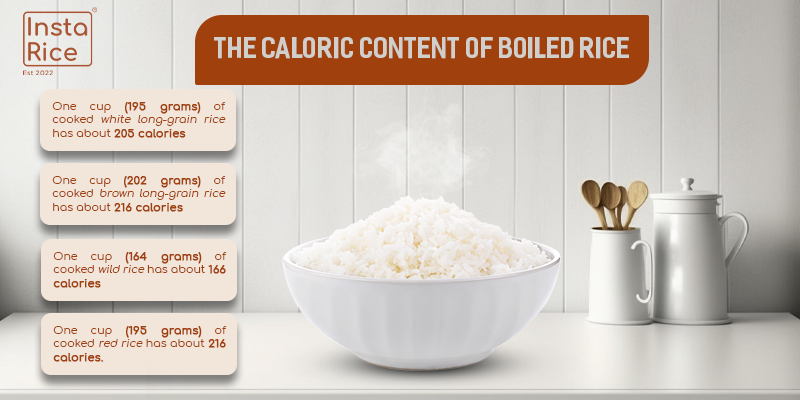Your Cart is Empty

Rice can vary in its caloric content and nutritional value depending on the type and the cooking method. In this article, we will explore how many calories are in boiled rice and which type of rice is the most nutritious.

The caloric content of boiled rice refers to the amount of energy that it provides per serving. This can be measured in calories or kilocalories (kcal), which are units of energy. One calorie is equal to 4.184 joules, and one kilocalorie is equal to 1000 calories.
The caloric content of boiled rice depends on several factors, such as the type of rice, the amount of water used, the cooking time, and the serving size. Generally speaking, boiled rice has fewer calories than raw or uncooked rice, because some of the starch and water are lost during the cooking process. However, boiled rice can still have a significant amount of calories, especially if you eat large portions.
According to the USDA National Nutrient Database , one cup (195 grams) of cooked white long-grain rice has about 205 calories, while one cup (202 grams) of cooked brown long-grain rice has about 216 calories. One cup (164 grams) of cooked wild rice has about 166 calories, while one cup (195 grams) of cooked red rice has about 216 calories.
Rice can be classified into different types based on its color, shape, size, texture, and aroma. Some of the most common types of rice are white, brown, wild, and red. Each type of rice has its own nutritional profile and health benefits.

White rice is rice that has been milled and polished to remove the bran and germ layers. This makes it white in color and gives it a soft and fluffy texture. White rice is also easier to cook and digest than other types of rice. However, white rice also loses some of its nutrients during the milling process, such as fiber, vitamins, minerals, and antioxidants. White rice is mainly composed of carbohydrates, with some protein and very little fat. It also has a high glycemic index (GI), which means that it can raise your blood sugar levels quickly after eating.

Brown rice is rice that has only been husked but not milled or polished. This means that it retains the bran and germ layers, which give it a brown color and a nutty flavor. Brown rice is also chewier and firmer than white rice. Brown rice is more nutritious than white rice, as it contains more fiber, vitamins, minerals, and antioxidants. Brown rice is also composed of carbohydrates, with some protein and fat. It has a lower GI than white rice, which means that it can keep your blood sugar levels stable for longer after eating.

Wild rice is not actually a type of rice, but a type of aquatic grass that grows in wetlands. It has long and dark grains that have a distinctive earthy flavor. Wild rice is also more expensive and less available than other types of rice. Wild rice is very nutritious, as it contains more protein, fiber, vitamins, minerals, and antioxidants than white or brown rice. Wild rice is also composed of carbohydrates, with some protein and fat. It has a low GI, which means that it can help you feel full and satisfied after eating.

Red rice is a type of whole grain rice that has a red or purple color due to the presence of anthocyanins, a type of antioxidant pigment. Red rice has a nutty and earthy flavor, and a chewy texture. Red rice is also very nutritious, as it contains more fiber, vitamins, minerals, and antioxidants than white or brown rice. Red rice is also composed of carbohydrates, with some protein and fat. It has a moderate GI, which means that it can provide you with steady energy after eating.

The way you cook your rice can also affect its caloric content and nutritional value. Some cooking methods can add extra calories, fat, or sodium to your rice, while others can preserve or enhance its nutrients. Here are some examples of different cooking methods for rice:
As you can see, there is no definitive answer to which type of rice is the most nutritious. Each type of rice has its own advantages and disadvantages, depending on your personal preferences and health goals. However, some general guidelines that you can follow are:
Rice is a healthy and versatile food that can be enjoyed in many different ways. It is a source of carbohydrates, protein, and other nutrients that are essential for your health. However, rice can also vary in its caloric content and nutritional value depending on the type and the cooking method. By choosing the right type of rice and cooking method for your needs, you can make the most of this staple food.